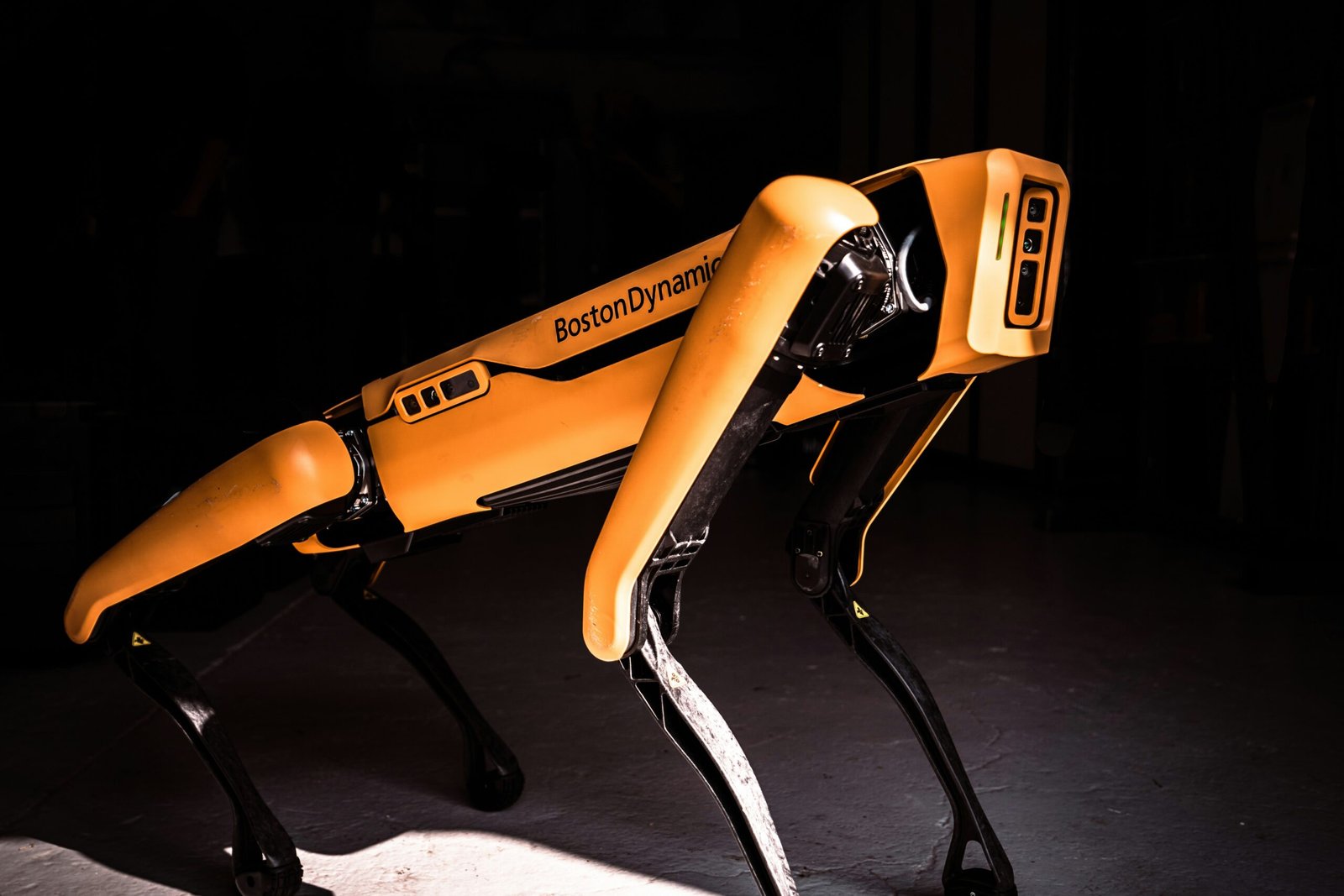The Role of Tech in the Circular Economy: Designing for a Sustainable Future


Introduction to Circular Economy and Sustainability
The concept of the circular economy is a transformative approach that deviates from the traditional linear economy, epitomized by the “take, make, dispose” model. In a linear economy, resources are extracted, utilized to create products, and ultimately discarded as waste, leading to significant environmental disruptions and resource depletion. Conversely, the circular economy revolves around the cyclical use of resources, emphasizing the regeneration, reuse, and recycling of materials.
The significance of the circular economy in promoting sustainability cannot be overstated. In the 21st century, the pressing issues of resource depletion, environmental degradation, and climate change have underscored the need for sustainable practices. As populations grow and economies expand, the demand for resources increases, pushing our planet’s boundaries and contributing to a myriad of ecological challenges. By adopting circular economy principles, we can mitigate these pressures, prolong the life cycle of materials, and reduce the overall environmental footprint.
Sustainability pertains to methodologies that meet the needs of the present without compromising the ability of future generations to meet theirs. This is where the circular economy becomes indispensable. It seeks to redefine growth by focusing on positive society-wide benefits. Frameworks in a circular economy are constructed to build economic, natural, and social capital, embodying an approach where resources are looped back into the system post-use through effective recycling and waste management techniques.
Additionally, the adoption of circular economy practices fosters innovation and drives industries towards more efficient and resilient operations. By advocating for the intelligent design of products and services that are easier to maintain, repair, upgrade, and recycle, it inherently encourages sustainability within commercial and residential ecosystems. Furthermore, circular design thinking can pivot the trajectory towards sustainability, encompassing product life extension, renewable energy utilization, and minimizing emissions.
In the current milieu, where environmental sustainability is becoming imperative, transitioning to a circular economy presents a pragmatic and robust pathway. It not only provides a blueprint for sustainable development but also ingrains a culture of responsible consumption and production, fostering a mutually beneficial coexistence between nature and humanity.
The environmental footprint of current technological practices is a growing concern, particularly in light of the escalating e-waste crisis, immense energy consumption, and substantial carbon footprint associated with technology production and use. E-waste, or electronic waste, poses a significant environmental hazard due to the improper disposal of electronic devices. According to the Global E-Waste Monitor 2020, a staggering 53.6 million metric tonnes of e-waste was generated worldwide in 2019, with only 17.4% being recycled properly. This encompasses discarded computers, smartphones, and other consumer electronics, leading to a proliferation of hazardous materials like lead, mercury, and cadmium in landfills.
Energy consumption by data centers and digital devices further amplifies the environmental impact. Data centers alone are responsible for approximately 1% of global electricity demand, according to the International Energy Agency (IEA). The demand for cloud computing, streaming services, and artificial intelligence will likely double this energy consumption by 2030, unless more efficient practices are adopted. Furthermore, the carbon footprint associated with the manufacturing and transportation of technology products is significant. For instance, the production of one smartphone generates an average of 85 kg of CO2, from mining rare earth elements to assembly and shipment.
A case study worth noting is that of the semiconductor industry, where the production of semiconductors, essential for countless electronic devices, involves high energy-intensive processes. The production facilities, known as fabs, are notorious for their immense energy consumption and reliance on perfluorocarbons, potent greenhouse gases with a global warming potential thousands of times that of CO2. The World Semiconductor Council reports an estimated 0.2% of global greenhouse gas emissions stem from the semiconductor production processes alone.
These statistics and case studies underscore the urgent need for a paradigm shift towards more sustainable technological practices. Embracing a circular economy approach, where products are designed for longevity, reuse, and recyclability, can significantly mitigate the environmental impact caused by current technologies. The transition to sustainable practices will not only reduce e-waste and energy consumption but also pave the way for a greener, more responsible technological future.
Technological Innovations Enabling the Circular Economy
Advancements in technology are playing a pivotal role in aiding the transition to a circular economy. Renewable energy technologies are at the forefront of this movement, facilitating the shift from fossil-based energy systems to sustainable alternatives. Solar, wind, and hydropower technologies are increasingly implemented across various sectors, reducing carbon footprints and promoting resource efficiency. These renewable energy sources provide the backbone for a sustainable, circular economy by minimizing energy waste and supporting eco-efficient operations.
Another cornerstone of the circular economy is the development of recyclable materials. Innovations in material science have led to the creation of products that are easier to recycle, repair, or repurpose. For example, advancements in polymer technology have resulted in recyclable plastics that maintain their properties over multiple life cycles, drastically reducing the volume of waste. Biodegradable materials are also being explored, providing viable alternatives to conventional plastics and ensuring that end-of-life products do not contribute to environmental degradation.
Waste management technologies have also seen significant progress in recent years. The implementation of smart waste management systems, utilizing Internet of Things (IoT) devices and blockchain technology, has revolutionized the way waste is tracked, collected, and processed. These systems provide real-time data that can optimize collection routes, reduce operational costs, and ensure that waste is sorted more effectively for recycling and repurposing. Moreover, advancements in chemical recycling processes are enabling the transformation of traditionally non-recyclable waste into valuable raw materials.
These technological innovations are being implemented across various industries to promote circularity and sustainability. In the manufacturing sector, for instance, closed-loop systems are being adopted, where waste products from production are reintegrated into the manufacturing process. In the agricultural sector, precision farming technologies and sustainable practices are reducing input waste and enhancing resource use efficiency. Likewise, the construction industry is embracing modular and prefab construction methods that significantly minimize material waste.
Through these technological advancements, the vision of a circular economy is becoming increasingly tangible, fostering a sustainable future where resources are utilized more efficiently, and waste is substantially minimized.
Designing for Longevity and Reuse
In the quest for a sustainable future, the principle of designing for longevity and reuse is pivotal. Products engineered with extended lifespans, reparability, and potential for reuse can dramatically reduce waste and resource consumption. Tech companies play a crucial role in this paradigm shift by enhancing product designs to ensure they are not only durable but also adaptable and repairable.
Modular designs stand at the forefront of sustainable tech innovation. By creating products with interchangeable components, companies ensure that when one part fails or becomes obsolete, it can be replaced without discarding the entire product. A prime example is the Fairphone, a smartphone designed with easily replaceable modules, allowing consumers to upgrade or repair components like the camera, battery, and display. This not only extends the device’s useful life but also empowers users to partake in their device’s maintenance, embodying the ethos of the circular economy.
Upgradable components further enhance sustainability by allowing technology to evolve without necessitating complete replacements. Computers, for instance, can be designed with easily accessible slots for RAM and storage upgrades, ensuring they stay current with advancing technology. The Dell Latitude series exemplifies this by offering laptops where users can upgrade memory and storage as needed, thus extending the machines’ utility and relevance.
The ease of repair is another critical facet of designing for reuse. Products designed with simple disassembly and repair processes facilitate maintenance and reduce the likelihood of disposal due to minor faults. iFixit, a company dedicated to providing repair guides and tools, has highlighted tech products like the Lenovo ThinkPad series, which are renowned for their repair-friendly designs. These devices often feature screws instead of glued components, making them more accessible for DIY repairs.
By embracing these design philosophies, technology companies can significantly mitigate the environmental impact of electronic waste. Products built with longevity, upgradability, and reparability in mind contribute not only to reducing waste but also to fostering a culture of sustainability and responsibility among consumers. This approach underscores the undeniable link between thoughtful design and the broader goals of the circular economy.
The Role of IoT and Smart Technologies
The integration of the Internet of Things (IoT) and other smart technologies plays a pivotal role in advancing the circular economy. These technologies facilitate the tracking, monitoring, and managing of resources in ways that were previously unimaginable. By leveraging IoT, organizations can optimize supply chains, enhance waste management systems, and improve overall efficiency, thereby reducing environmental impact.
One prominent example is the use of smart grids, which are revolutionizing the energy sector. Smart grids employ IoT solutions to balance energy demand and supply dynamically. This not only minimizes energy waste but also integrates renewable energy sources more effectively. For instance, smart meters provide real-time data on energy consumption, enabling consumers and utilities to make informed decisions. As a result, energy can be delivered more efficiently, reducing the carbon footprint.
Another significant application of IoT in the circular economy is in waste management. Smart waste bins equipped with sensors can monitor the fill levels and communicate with waste collection services. This ensures that bins are collected and emptied only when necessary, optimizing collection routes and schedules. Consequently, this smart waste management system reduces fuel consumption and greenhouse gas emissions associated with traditional waste collection methods.
Supply chain optimization tools also benefit from IoT by enhancing transparency and traceability. IoT devices can track the location, condition, and lifecycle of products, offering valuable insights that help in minimizing excess production and waste. For example, by employing RFID tags and IoT sensors, companies can monitor the entire journey of a product from manufacturing to end-use, ensuring it is utilized efficiently and recycled appropriately.
Case studies demonstrate the impact of these technologies. For example, a leading fashion retailer utilized IoT to monitor the condition of clothing items, thereby extending their lifecycle. Additionally, a large-scale agricultural firm adopted IoT-enabled sensors to manage water use more efficiently, resulting in a significant reduction in water waste and improved crop yields. These successes underscore the transformative potential of IoT in promoting sustainability.
Blockchain for Traceability and Transparency
Blockchain technology offers transformative potential for enhancing traceability and transparency within the circular economy. By harnessing the decentralized and immutable nature of blockchain, businesses can effectively track product life cycles, verify sustainable practices, and ensure compliance with environmental regulations. This technological advancement addresses critical challenges in the circular economy, including fraud, inefficiency, and lack of clarity in the supply chain.
One significant advantage of blockchain is its ability to track products from their origin through to their end-of-life. The transparency provided by a decentralized ledger allows all stakeholders to access an unalterable record of a product’s journey. This ensures accountability each step of the way, from the sourcing of raw materials to manufacturing, distribution, and disposal or recycling. Companies can provide trustworthy data on the sustainability of their practices, building consumer confidence and promoting informed purchasing decisions.
Blockchain’s verification capabilities are also pivotal in ensuring compliance with environmental regulations. As governments and international organizations continue to tighten regulations around environmental impact, blockchain can create verifiable audit trails that certify adherence to these standards. For instance, blockchain can store carbon footprints, waste management records, and certificates of sustainable sourcing, making these easily accessible during audits and inspections.
Several companies are already utilizing blockchain to promote circularity. Provenance, a company based in the UK, uses blockchain to provide transparency and traceability for brands. Provenance allows businesses to communicate their supply chain information credibly, thereby fostering trust and integrity. Similarly, IBM’s Food Trust blockchain is revolutionizing the food industry by enhancing safety and reducing waste through robust traceability mechanisms. By tracking food products from farm to table, IBM’s solution ensures quality and reduces instances of contamination and food fraud.
In essence, blockchain technology empowers both businesses and consumers with reliable data and transparency, fostering a more sustainable and circular economy. By integrating blockchain, companies can achieve new heights of operational efficiency and environmental stewardship, ultimately contributing to a sustainable future.
Consumer Participation and Behavioral Shifts
Consumer engagement is pivotal in driving the advancement of a circular economy. Through the emergence of technology-enabled platforms, consumers now possess unprecedented tools to contribute actively to sustainability. These platforms have revolutionized how we approach recycling, sharing, and refurbishment by leveraging modern technological advancements to foster environmentally friendly behaviors.
Recycling apps like Recycle Coach and iRecycle have simplified the process of identifying recyclable materials, making it easier for consumers to sort waste effectively. These applications provide detailed information on what can be recycled, where to drop off materials, and statistics on how their efforts contribute to environmental conservation. Similarly, apps like OLIO promote sharing within communities by connecting people with excess food to neighbors in need, thus reducing food waste on a substantial scale.
Furthermore, technology has invigorated the concept of refurbishment, with platforms such as Back Market leading the charge. This marketplace for refurbished electronics allows consumers to purchase high-quality, pre-owned devices that would otherwise end up as electronic waste. Their commitment to quality assurances and warranties has significantly contributed to changing consumer perceptions around refurbished goods, making them a viable and attractive alternative to new products.
Behavioral shifts towards more sustainable consumption are also facilitated by apps such as Good On You, which evaluates fashion brands on their sustainability practices, enabling consumers to make informed decisions aligned with their values. These tech solutions underscore the capacity of technology to not just enable individual change but to drive collective action towards a more sustainable future.
Hebel, the dynamic interaction between consumers and technology underscores the effectiveness of informed decision-making in embedding sustainable practices into the daily routines of individuals. Through these innovative applications and platforms, technology has proven vital in fostering the behavioral shifts necessary for a functional circular economy, demonstrating the profound impact consumer participation can make.
Future Prospects and Challenges
As we look forward, the role of technology in advancing the circular economy presents both promising opportunities and notable challenges. Technological advancements hold the potential to revolutionize recycling processes, resource management, and product design, fostering more sustainable practices across industries. Innovations such as blockchain for transparent supply chains, artificial intelligence for efficient resource allocation, and the Internet of Things for predictive maintenance systems are poised to be pivotal in this transition.
However, regulatory barriers pose significant challenges. Differing regulations across regions can complicate the implementation of circular economy practices, necessitating a harmonized global framework to facilitate widespread adoption. Additionally, the rapid pace of technological change may outstrip regulatory developments, creating mismatches that can stymie progress. Policymakers, therefore, must engage in proactive dialogue with industry leaders and technologists to create adaptable regulatory environments.
Market acceptance is another critical hurdle. While consumer awareness of sustainability issues is growing, there is often a gap between knowledge and action. Companies must not only innovate but also invest in educating their customers about the benefits and practicality of circular economy products. Public acceptance will be instrumental in aligning market dynamics with sustainable principles, ensuring that eco-friendly products can reach a broader audience.
Collaboration among stakeholders is essential to overcome these challenges. Cross-industry partnerships, public-private initiatives, and contributions from academia can drive the integration of innovative technologies tailored for a circular economy. By sharing knowledge and resources, stakeholders can build cohesive strategies that address both technical and operational aspects, fostering a robust sustainable framework.
In navigating these prospects and challenges, the focus must remain on sustained collaboration and innovation. A concerted effort to harmonize regulations, boost market acceptance, and leverage technological advancements will pave the way for a resilient and sustainable circular economy that benefits all stakeholders.




